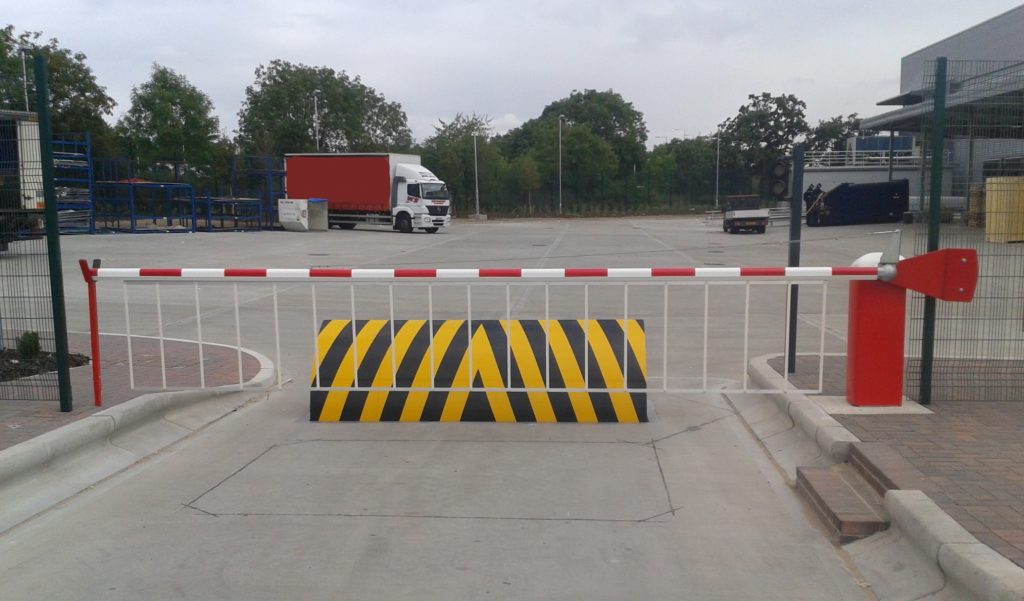A Biased View of Wedge Barriers
What Does Wedge Barriers Do?

14 and the surface area 12 to which the barrier 10 is safeguarded may be made from concrete - Wedge Barriers. 2, the obstacle 10 is placed to or includes a support or subframe (e. g., anchor 30 received FIG. 2 )protected beneath the surface 12. For instance, the bather 10 may be bolted to the anchor or secured to the anchor by various other mechanical fasteners. In the illustrated embodiment, the obstacle 10 includes a wedge plate 16, that includes a part that is considerably identical with the surface area 12 when the obstacle 10 remains in the pulled back position. In other words, lorries or individuals might pass over the barrier 10 when the barrier 10 is in the withdrawed placement and experience small elevation about the surface 12 while on the obstacle 10. As gone over in information below, when the obstacle 10 is in the released setting, the wedge plate 16 is held and supported in a raised setting by a training system of the obstacle 10. Furthermore, the components 18 may be bolted or otherwise mechanically coupled to each other. In this manner, repair or substitute of several parts 18 might be streamlined and structured. That is, repair work or substitute of solitary elements
18 might be done quicker, easily, and price properly. FIG. In certain embodiments, the anchor 30 may be a steel frame including plates, light beams(e. g., I-beams ), and/or other frameworks that are safeguarded within the structure 14, which might be concrete. At the surface 12, an upper side 28 of the anchor 30 might be at the very least partially subjected
, therefore enabling the add-on of the obstacle 10 to the my latest blog post anchor 30. g., threaded openings)in one or even more beams or plates of the support 30 might be subjected to the surface area 12. In this manner, screws 32 or various other mechanical fasteners might be used to protect the obstacle 10 to the anchor 30. As the barrier 10 is placed to the surface 12 of the structure 14, collection of particles and various other product under the barrier may be lowered, and elements of the bather 10 may not be exposed to below quality environments. As look at these guys indicated by recommendation character 52, the lifting device 50 includes parts got rid of under the wedge plate 16. For example, the components 52 below the wedge plate 16 may consist of an electromechanical actuator, a web cam, one or more cam surfaces, and so forth. Additionally, the lifting mechanism 50 includes a spring assembly 54
The spring pole 58 is paired to a web cam(e. g., camera 80 received FIG. 4) of the lifting device 50. The springtimes 60 disposed concerning the spring rod 58 are kept in compression by spring supports 62, including a taken care of springtime assistance 64. That is, the fixed springtime assistance 64 is fixed loved one to the foundation 14 et cetera of the bather 10.
Some Known Questions About Wedge Barriers.
g., springtime assistance 65 )might be fixed to the end of the spring pole 58 to enable compression of the springs 60. As the springtimes 60 are pressed in between the spring supports 62, the spring assembly 54 creates a pressure acting on the webcam coupled to the springtime pole 58 in a direction 66. The staying force applied to
the cam to deploy the wedge plate 16 may be provided offered an electromechanical actuator 84 or other actuator. Thus, the springtime setting up 54 and the actuator 84(e. g., electromechanical actuator)might operate with each other to convert the camera and raise the wedge plate 16.
As pointed out over, in the released placement, the wedge plate 16 serves to block access or traveling beyond the barrier 10. The barrier 10(e. g., the wedge plate 16 )might obstruct pedestrians or lorries from accessing a residential property or path. If a vehicle is traveling in the direction of the deployed wedge plate 16(e. For instance, in one circumstance, the security legs 86 may be expanded duringmaintenance of the company website barrier 10.